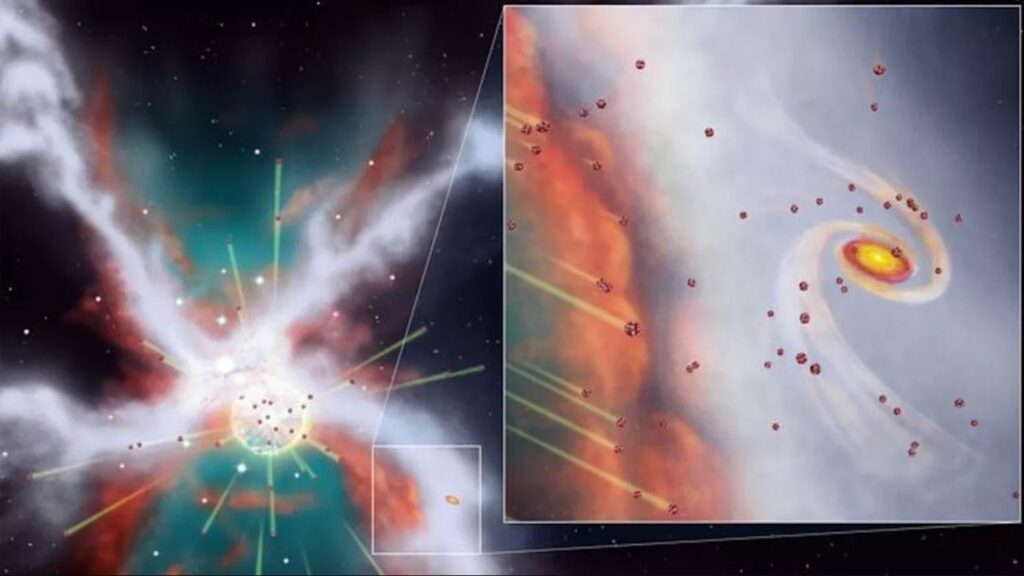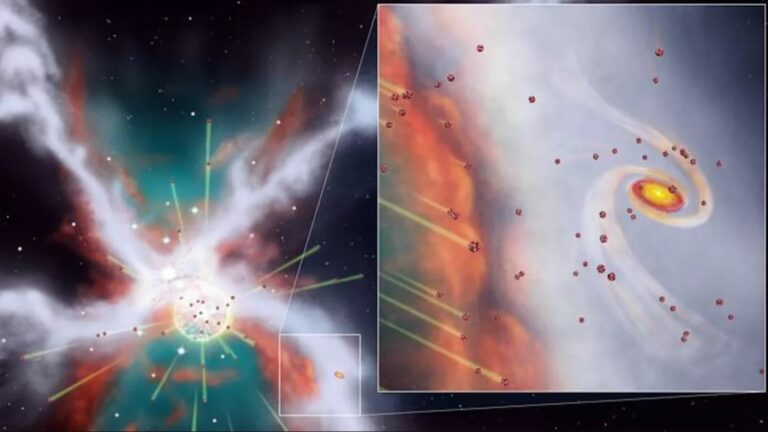Survival of Our Young Solar System Possible Despite Nearby Supernova Blast
Radioactive isotopes in meteorites suggest that a supernova erupted in the vicinity of the solar system as it was forming.
Shield of Molecular Gas Likely Saved Our Developing Solar System from Nearby Supernova
Through the analysis of isotopes found in meteorites, scientists have deduced that a close-range supernova explosion could have obliterated our nascent solar system, if not for the presence of a protective shield formed by molecular gas.

By examining concentrations of a radioactive isotope of aluminum in meteorite samples, researchers unveiled evidence of an influx of this radioactive material roughly 4.6 billion years ago. The most plausible explanation for this sudden surge is a nearby supernova blast, according to the study team.
The study, led by astrophysicist Doris Arzoumanian from the National Astronomical Observatory of Japan, suggests that our early solar system managed to withstand the shockwave of a supernova due to its location within a protective cocoon. Meteorites act as remnants of the solar system’s evolution, allowing scientists to piece together its history.
Supernova explosions occur when massive stars deplete their nuclear fusion fuel, leading to a collapse under gravitational forces. The resulting supernova disperses the heavy elements forged by the dying star into space. However, the accompanying blast wave is potent enough to dismantle any nearby newborn planetary systems.
Stars form within vast clouds of molecular gas, characterized by dense tendrils or filaments. Smaller stars, like our sun, form along these filaments, while more massive stars, like the one that underwent the supernova, tend to form at the intersections of filaments.
Considering this, Arzoumanian and her team estimated that it would have taken approximately 300,000 years for the supernova shockwave to dismantle the dense filament shielding our developing solar system.
Meteorites rich in radioactive isotopes originated from larger bodies like asteroids that formed within the first 100,000 years of the solar system’s existence, while it remained enveloped within this dense filament. The filament likely shielded the growing solar system from harmful radiation emitted by hot and massive stars known as OB stars, which could have hindered the formation of planets such as Earth.
These findings not only suggest the filament’s role as a protective barrier but also propose that it may have captured and channeled radioactive isotopes, transporting them to the vicinity of the young sun. The researchers believe that this discovery holds significant implications for comprehending the formation, evolution, and characteristics of stellar systems.
“In our understanding of the formation, evolution, and properties of stellar systems, this scenario may have multiple important implications,” noted the team in their study published in the Astrophysical Journal Letters in April.
“For instance, the host filament may play a crucial role in shielding the young solar system from far-ultraviolet radiation emitted by OB stars, which would otherwise photo-evaporate the protostellar disk and impact its final size, thereby directly influencing planet formation within the disk,” they added.
Do not forget to share your opinion with us to provide you with the best posts !




0 Comments